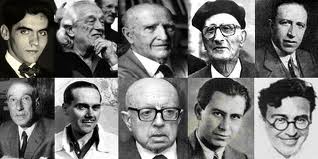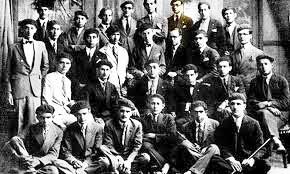Spanish Literature of the XX Century

From the middle of the XIX century until the break of the Spanish Civil War, there are in Spain numerous pairings of intellectuals or artists that have come to be known by the generation to which they belong: 1868, 1898, 1914, etc. However, among them perhaps the most popular to this day in Spanish schools in Spain and abroad remains the 'Generation of 27'.
From Luis Cernuda to Federico García Lorca, the popularity of this generation of artists has been enhanced, no doubt, by their involvement in the civil war, and by the brutal proportions of the conflict. After all, Spain lived in an almost constant state of unrest and internal strife through a good portion of the XIX century, and yet, much of the details of the previous civil wars in the country are all but forgotten.
Not so, however, with the 'Generation of 27', whose literary achievements - primarily poetic - seem to grow in appreciation with the passage of time. The patriarch of this movement, as it were - the senior figure whose teachings would influence a great number of the poets included within the category - is Juan Ramón Jiménez.

Originally from the town of Moguer, near Huelva, Juan Ramón Jiménez moved to Madrid as a young man, rubbing shoulders with a selective circle of Modernist writers, including Rubén Darío, and publishing his first collections of poetry. But his temperament always remained closer to the quiet life of the countryside, as it remained prone to emotional and nervous breakdowns.
Following a long period of treatment and exile, Jiménez spent the years from 1916 to 1936 in Madrid, during which he acted as intellectual mentor of many of the younger poets, such as Federico García Lorca. By this time he had already attained international fame with his Platero and I, a collection of brief, self-contained impressions in the form of a highly sensitive interaction with his donkey, Platero, as they pass through the idyllic landscape of his childhood.
Sensibility and recollection, essential ingredients of Platero and I, will become, as well, corner stones of the heterogeneous aesthetic of the 'Generation of 27', which will, nonetheless, put emphasis on the moderation of these emotions, on the balance of sentimental expression and intellectual activity.
Generation of 28
The work of Luis Cernuda, for instance, illustrates particularly well the combination of fervent intensity and intellectual abstraction advocated by the group. Born in Seville in 1902, Cernuda was uncharacteristic in that he resisted a move towards the capital until 1928, when he was already 25 years of age.

Luis Cernuda's poetic oeuvre is collected in a single volume, La realidad y el deseo, an ambitious project that forces the reader to consider each of Cernuda's poems within a greater context. Inevitably, the compendium is not as coherent as it might be hoped, touching upon a vast range of subjects that, ultimately, all revolve around, or are somehow connected to love:
Filial love, lustful love, the object of love, the subject of love, love as a Platonic entity, Cernuda's poetry is ultimately a careful treatise about the nature of love, not as a passion (at least not only) but as a guiding principle and an unavoidable force that cannot always be managed but that is always present in life.

Luis Cernuda's literary production is at once singular and representative of the general ideas shared by the rest of the poets from the 'Generation of 27'. Evidently, there are huge differences between his sensitivity and that of, say, Federico García Lorca's, whose range of subjects was far wider than most poet's.
Nevertheless, from Federico García Lorca's fascination with popular culture, evidenced, for instance, in his Romancero Gitano, to Rafael Alberti's apocalyptic vision or Cernuda's infatuation with love, there are always elements in common that link the works of these poets, be they visual elements the prolific amount of images, a shared Surrealist influence, common experiences of close friends or, ultimately, the lessons of a common master assimilated in a different way.
